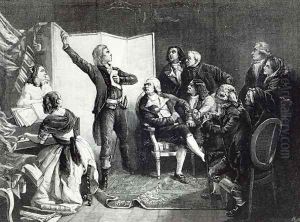Pils, Isidore Paintings
Isidore Pils was a French painter born on July 19, 1813, in Paris, France. He was renowned for his historical and genre paintings as well as for his work as a lithographer. Pils came from an artistic background; his father, François Pils, was an esteemed artist as well. This early environment fostered a passion for art, and Pils went on to study under several prominent painters of the time, including François-Édouard Picot and Léon Cogniet.
Pils gained recognition in 1838 when he won the prestigious Prix de Rome for his work 'The Death of Hippocrates.' Winning the Prix de Rome provided him with the opportunity to study at the French Academy in Rome, located in the Villa Medici. It was during his time in Italy that he deeply engaged with the Italian Masters, which had a lasting influence on his style and technique.
After returning to Paris, Pils achieved considerable success and was commissioned to paint several large-scale works. His most famous painting is probably 'Rouget de Lisle Singing La Marseillaise for the First Time,' which depicts the famous scene of the French national anthem's inception. Pils was also involved in the decoration of various public buildings in Paris, such as the Hôtel de Ville, the Palais du Luxembourg, and the Palais Garnier, where he painted the ceiling of the grand staircase.
During the Second Empire, Isidore Pils became a professor at the École des Beaux-Arts in Paris, where he taught many students who would go on to become notable artists themselves. His works were characterized by their dramatic intensity, a keen sense of realism, and a masterful handling of light and shadow, which can be partly attributed to his study and admiration of the works of the Old Masters, as well as his own meticulous observations of nature and human interaction.
Pils was awarded the Legion of Honor in 1855 and was promoted to Officer of the order in 1867, reflecting the esteem in which he was held as an artist in France. He continued to paint and contribute to the arts until his death on March 3, 1875, in Paris. His legacy is maintained through his influential teachings and his celebrated works, which remain on display in museums and galleries around the world.
